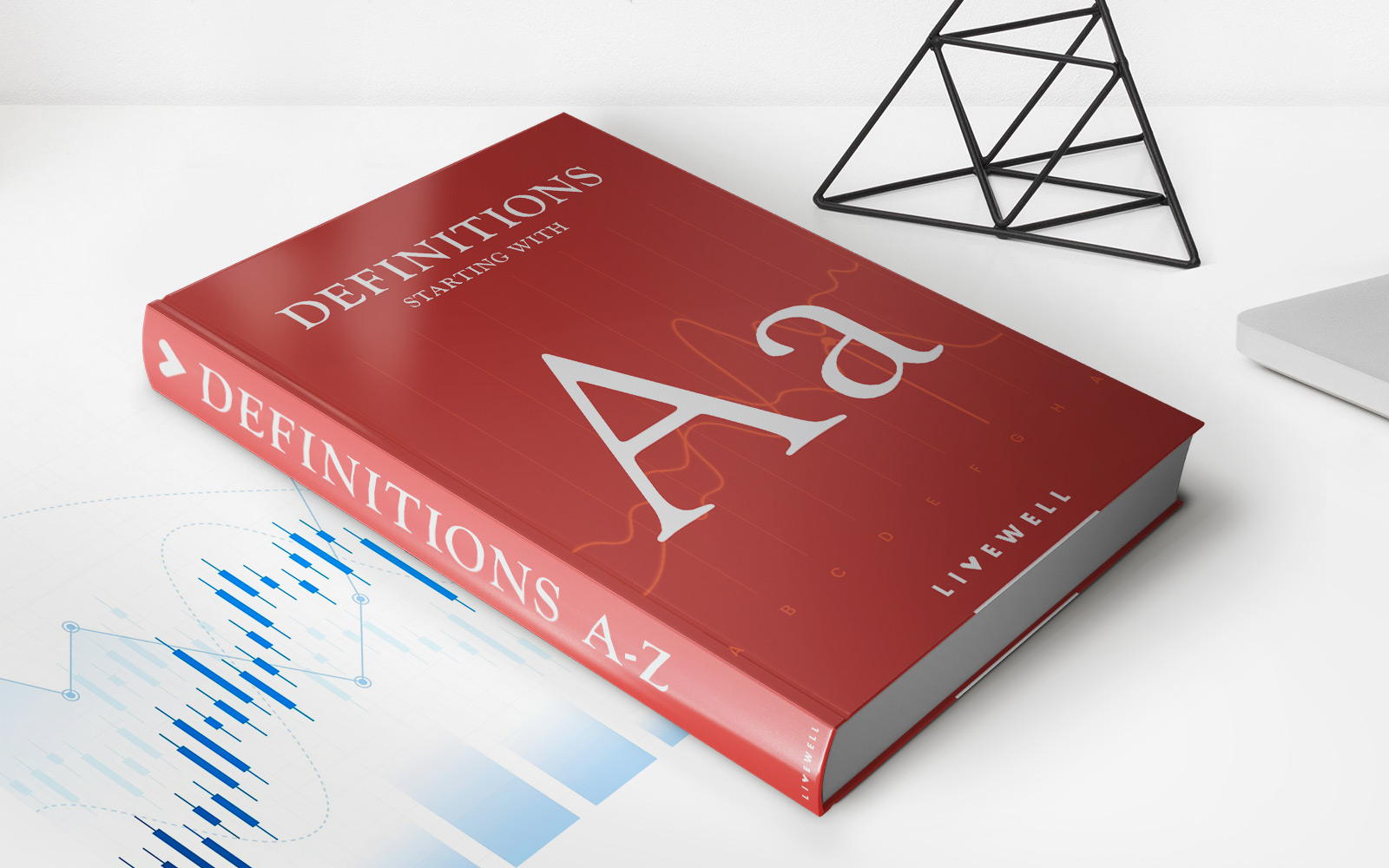

Finance
What Does 25/50/25 Mean In Car Insurance
Published: November 23, 2023
Looking to understand the meaning of 25/50/25 in car insurance? Our finance experts explain how these numbers affect your coverage and financial liability.
(Many of the links in this article redirect to a specific reviewed product. Your purchase of these products through affiliate links helps to generate commission for LiveWell, at no extra cost. Learn more)
Table of Contents
- Introduction
- Understanding the Basics of Car Insurance
- What is 25/50/25?
- Breaking Down the Numbers: What Each Number Represents
- The Importance of 25/50/25 Coverage
- Potential Consequences of Insufficient Coverage
- Factors to Consider when Choosing Car Insurance Limits
- Other Commonly Used Coverage Limits
- Finding the Right Car Insurance for You
- Conclusion
Introduction
Car insurance is an essential aspect of owning and operating a vehicle. It provides financial protection in the event of an accident or damage to your car, as well as coverage for liability claims. When shopping for car insurance, you may come across terms such as 25/50/25 coverage. But what does this mean? Understanding the basics of car insurance and the meaning behind these numbers is crucial for making informed decisions about your coverage.
In this article, we will delve into the concept of 25/50/25 coverage and its significance in car insurance. We will break down the numbers and explain what each one represents. Additionally, we will explore the importance of having adequate coverage and the potential consequences of insufficient insurance limits.
Furthermore, we will discuss the factors you should consider when choosing your car insurance limits, as well as other commonly used coverage limits. By the end of this article, you will have a clearer understanding of what 25/50/25 coverage entails and be better equipped to find the right car insurance policy for your needs.
Let’s dive in and demystify the meaning of 25/50/25 in car insurance.
Understanding the Basics of Car Insurance
Before we delve into the specifics of 25/50/25 coverage, let’s first establish a solid understanding of the basics of car insurance. Car insurance is a contract between you and an insurance company that provides financial protection for your vehicle, as well as coverage for liability claims.
There are several types of coverage options available in a typical car insurance policy. These include:
- Liability coverage: This type of coverage pays for injuries or property damage caused by you in an accident.
- Collision coverage: This coverage pays for damages to your vehicle in the event of a collision with another vehicle or object.
- Comprehensive coverage: Comprehensive coverage protects your vehicle against damage caused by incidents such as theft, vandalism, natural disasters, or falling objects.
- Personal injury protection (PIP) or medical payments: This coverage pays for medical expenses for you and your passengers if you are injured in an accident.
- Uninsured/underinsured motorist coverage: This coverage protects you if you are involved in an accident with a driver who has insufficient insurance or no insurance at all.
Each state has its own minimum requirements for car insurance. However, it is important to note that these minimum requirements may not provide enough coverage in case of a serious accident. It is always advisable to consider higher coverage limits to adequately protect yourself and your assets.
Now that we have a basic understanding of car insurance, let’s move on to unravel the meaning behind the 25/50/25 coverage.
What is 25/50/25?
When it comes to car insurance, the term “25/50/25” refers to liability coverage limits. These numbers represent the maximum amount of coverage provided by your insurance policy in the event of an accident where you are found at fault.
The first number in the sequence, 25, represents the bodily injury liability coverage limit per person. This means that your insurance company will pay up to $25,000 for medical expenses and other costs associated with injuries sustained by a single individual in the accident.
The second number, 50, signifies the bodily injury liability coverage limit per accident. In this case, your insurance company will pay up to $50,000 for total medical expenses and other costs related to injuries sustained by all individuals involved in the accident, regardless of the number of people injured.
The third number, 25, denotes the property damage liability coverage limit. This represents the maximum amount your insurance company will pay for property damage caused by you in the accident. It typically covers repairs or replacement costs for the other party’s vehicle, as well as any damage to other property such as buildings, fences, or signage.
It is important to note that these coverage limits are not the maximum amount your insurance company will pay overall. They represent the maximum amounts payable for each respective category of liability coverage.
Insurance policies typically include a deductible, which is the amount you are responsible for paying out of pocket before your insurance coverage kicks in. The deductible is separate from the coverage limit, and it varies depending on your policy and personal preferences.
Now that we have a clear understanding of what 25/50/25 represents, let’s explore the significance of these coverage limits in car insurance.
Breaking Down the Numbers: What Each Number Represents
Now that we know that 25/50/25 refers to the liability coverage limits in car insurance, let’s take a closer look at what each number represents and how it impacts your coverage.
The first number, 25, represents the bodily injury liability coverage limit per person. This means that your insurance policy will provide coverage for up to $25,000 in medical expenses and other costs associated with injuries sustained by a single individual in an accident where you are at fault. This coverage helps pay for medical bills, rehabilitation costs, and potentially lost wages for the injured party.
The second number, 50, signifies the bodily injury liability coverage limit per accident. This means that your insurance policy will provide coverage for up to $50,000 in total medical expenses and other costs related to injuries sustained by all individuals involved in the accident. This coverage is designed to protect you financially in case multiple people are injured in an accident where you are found at fault.
The third number, 25, represents the property damage liability coverage limit. This means that your insurance policy will provide coverage for up to $25,000 for property damage caused by you in an accident. This coverage helps cover the cost of repairs or replacement for the other party’s vehicle, as well as any damage to other property such as buildings, fences, or signage.
It is important to understand that these coverage limits are not the maximum amount your insurance company will pay overall. They represent the maximum amounts payable for each respective category of liability coverage.
Keep in mind that these numbers are the minimum requirements set by some states, and you may need higher coverage limits depending on your personal circumstances. In more serious accidents, medical expenses and property damage can quickly exceed these limits, leaving you financially responsible for the remaining costs.
Now that we have broken down the significance of each number in 25/50/25 coverage, let’s explore why having adequate coverage is so important.
The Importance of 25/50/25 Coverage
Having 25/50/25 coverage in your car insurance policy is important for several reasons. Let’s explore the significance of maintaining these coverage limits:
1. Meeting Legal Requirements: Many states have minimum car insurance requirements, and 25/50/25 coverage is often the baseline requirement. By maintaining this coverage, you ensure compliance with the law and avoid potential fines or penalties.
2. Protecting Your Assets: In the event of a severe accident where you are at fault, inadequate liability coverage could expose you to significant financial risks. If the medical expenses and property damage exceed your coverage limits, you may be held personally responsible for the remaining costs. By having sufficient 25/50/25 coverage, you can protect your assets and avoid potential financial ruin.
3. Safeguarding Your Future: Accidents can lead to long-term financial consequences, especially if you are deemed responsible for injuries or property damage. Insufficient coverage may result in lawsuits and substantial financial burdens that can impact your future earnings, savings, and even your peace of mind. By maintaining adequate 25/50/25 coverage, you can mitigate these risks and safeguard your financial stability.
4. Covering Medical Expenses: Injuries sustained in car accidents can lead to substantial medical expenses. With 25/50/25 coverage, you have a higher chance of meeting the medical needs of injured parties, including hospital bills, rehabilitation costs, and potential legal fees. This coverage ensures that you fulfill your responsibilities and provide necessary support during difficult times.
5. Peace of Mind: Car accidents are already stressful and emotionally draining experiences. With 25/50/25 coverage, you can have peace of mind knowing that you have adequate insurance protection in place. This allows you to focus on recovering from the accident and moving forward without the added stress of financial uncertainty.
While 25/50/25 coverage is the minimum requirement in some states, it’s essential to evaluate your individual circumstances and consider higher coverage limits. Every accident is unique, and costs can quickly surpass these minimums. Consulting with an insurance professional can help you determine the appropriate coverage limits for your specific needs and risk tolerance.
Next, let’s take a closer look at the potential consequences of insufficient coverage.
Potential Consequences of Insufficient Coverage
Opting for insurance coverage that falls short of the 25/50/25 limits can have significant consequences. While it may be tempting to choose lower coverage to save on premiums, the potential fallout from insufficient coverage can far outweigh the initial cost savings. Let’s explore some of the potential consequences:
1. Financial Liability: If you are involved in an accident where you are at fault and the resulting damages exceed your coverage limits, you may be held personally responsible for the remaining costs. This can include medical expenses, property damage, and legal fees. Insufficient coverage can leave you exposed to significant financial liability, potentially leading to financial hardship or even bankruptcy.
2. Legal Penalties: Driving without adequate insurance coverage is illegal in most states. If you are caught driving without the minimum required coverage, you can face fines, license suspension, and even legal consequences. It is crucial to maintain the required 25/50/25 coverage or higher to avoid these penalties.
3. Jeopardizing Your Assets: Insufficient coverage can put your personal assets at risk. If you are found liable for damages exceeding your coverage, the injured party may take legal action to seize your assets, including your savings, investments, or even your home. This can have long-lasting financial implications and significantly impact your financial stability.
4. Limited Access to Medical Treatment: Insufficient coverage may limit your ability to receive the necessary medical treatment if you are injured in an accident. Inadequate coverage can lead to higher out-of-pocket expenses, making it difficult to afford vital medical care, rehabilitation, or therapy. This can hinder your recovery and potentially have long-term consequences on your health and well-being.
5. Difficulty Obtaining Future Insurance: In some cases, having a history of insufficient coverage or lapses in coverage can make it challenging to obtain affordable car insurance in the future. Insurance providers consider this as a higher risk, which can result in higher premiums or limited coverage options. It’s important to maintain continuous and adequate coverage to avoid these difficulties.
It is crucial to prioritize your financial security and protect yourself from potential consequences by maintaining sufficient coverage. Investing in adequate car insurance may seem like an additional expense now, but it can save you from significant financial hardship in the long run.
Now that we understand the potential consequences of insufficient coverage, let’s explore the factors you should consider when choosing car insurance limits.
Factors to Consider when Choosing Car Insurance Limits
When selecting car insurance limits, it is essential to consider various factors to ensure you have adequate coverage. Here are some key factors to keep in mind:
1. State Requirements: Start by familiarizing yourself with the minimum car insurance requirements in your state. Each state has its own mandated coverage limits, which may include bodily injury liability, property damage liability, and other types of coverage. Make sure to comply with these requirements as a starting point.
2. Your Assets and Net Worth: Consider your personal financial situation, including your assets and net worth. If you have significant assets or a high net worth, it is wise to consider higher coverage limits to protect yourself from potential lawsuits that could threaten your financial well-being.
3. Driving Habits and Location: Evaluate your driving habits and where you primarily drive. If you frequently commute in high-traffic areas or areas with a higher risk of accidents, such as urban areas, you may want to consider higher coverage limits to protect yourself in case of a serious accident.
4. Value of Your Vehicle: If you have a newer or more valuable vehicle, it is important to consider comprehensive and collision coverage to protect against potential damage or total loss. The coverage limits for these types of coverage should be sufficient to cover repair or replacement costs.
5. Future Earning Potential: Consider your future earning potential and how much financial risk you are willing to assume. If you anticipate earning a higher income in the future, it may be prudent to have higher coverage limits to protect that future income from potential claims or lawsuits.
6. Budget and Premiums: While it is important to have adequate coverage, you should also consider your budget and the premiums associated with higher coverage limits. Work with your insurance provider to find a balance between coverage limits that suit your needs and premiums that are affordable for you.
7. Consultation with an Insurance Professional: Consulting with an insurance professional can provide valuable guidance and help you determine the appropriate coverage limits for your specific situation. They can assess your needs, risk tolerance, and budget, and provide recommendations tailored to your circumstances.
Remember, the goal is to have sufficient coverage to protect yourself and your assets in the event of an accident. It is better to err on the side of caution and choose higher coverage limits whenever possible.
In the next section, we will explore other commonly used coverage limits in car insurance.
Other Commonly Used Coverage Limits
While 25/50/25 coverage is a common liability coverage limit, there are other coverage limits to consider when purchasing car insurance. These limits provide varying levels of protection and can be tailored to your specific needs. Here are some commonly used coverage limits:
1. 50/100/50: This coverage limit provides $50,000 in bodily injury liability coverage per person, $100,000 in bodily injury liability coverage per accident, and $50,000 in property damage liability coverage. It offers higher coverage limits for bodily injury and property damage, providing more protection in case of an accident with multiple injuries or extensive property damage.
2. 100/300/100: This coverage limit offers even higher levels of protection. It includes $100,000 in bodily injury liability coverage per person, $300,000 in bodily injury liability coverage per accident, and $100,000 in property damage liability coverage. This coverage limit is often recommended for those with higher net worth or more significant assets to protect.
3. Umbrella Coverage: Umbrella coverage goes beyond the limits of your primary car insurance policy. It provides additional liability coverage, typically in increments of $1 million, that applies to not only your car but also other personal liability exposures. Umbrella coverage is designed for those who want extra protection beyond the standard coverage limits.
4. Medical Payments Coverage: Medical payments coverage, also known as MedPay, is an optional coverage that pays for medical expenses resulting from a car accident, regardless of who is at fault. It can help cover medical bills, ambulance fees, and other healthcare costs for you and your passengers. Coverage limits for MedPay vary but are typically between $1,000 and $25,000.
5. Uninsured/Underinsured Motorist Coverage: Uninsured/underinsured motorist coverage is an important addition to your policy. It protects you if you are involved in an accident with a driver who does not have insurance or lacks sufficient coverage. This coverage helps pay for medical expenses, lost wages, and other damages. The coverage limits for uninsured/underinsured motorist coverage should be the same as your bodily injury liability limits.
It is crucial to evaluate your specific needs and risk tolerance when choosing coverage limits beyond the minimum requirements. Consulting with an insurance professional can help you determine the appropriate coverage limits to ensure you have the right level of protection in case of an accident.
Now that we have explored different coverage limits, let’s move on to finding the right car insurance for your needs.
Finding the Right Car Insurance for You
Choosing the right car insurance policy can be a daunting task, but it is essential to protect yourself and your assets. Here are some key steps to help you find the right car insurance for your needs:
1. Assess Your Coverage Needs: Start by evaluating your coverage needs and considering factors such as your driving habits, the value of your vehicle, and your financial situation. This will help you determine the types of coverage and the appropriate coverage limits for your policy.
2. Compare Multiple Insurance Providers: Obtain quotes from different insurance providers and compare their coverage options, premiums, and customer reviews. Don’t simply focus on the lowest price; consider the company’s reputation and customer service as well.
3. Understand the Policy Details: Read the policy documents carefully and understand their terms and conditions, including coverage limits, deductibles, exclusions, and claims processes. Make sure you fully comprehend what is covered and what is not before making a final decision.
4. Seek Recommendations and Reviews: Ask friends, family, or trusted associates for recommendations on reliable insurance providers. Additionally, read online reviews to gain insights into other customers’ experiences with different companies. This feedback can help you make an informed decision.
5. Consider Bundling Policies: If you have other insurance needs, such as homeowners or renter’s insurance, consider bundling your policies with the same insurance provider. Bundling can often result in discounts and cost savings.
6. Evaluate Customer Service: Choose an insurance company with a reputation for excellent customer service. Prompt and responsive customer support can make a significant difference when it comes to filing a claim or addressing any concerns you may have in the future.
7. Review and Update Your Policy Regularly: As your circumstances change over time, it is important to review and update your car insurance policy accordingly. This includes changes in your driving habits, vehicle upgrades, or financial changes. Regularly reassess your coverage needs to ensure you have adequate protection.
8. Consult with an Insurance Professional: If you are unsure of the coverage options or finding the right policy, consider consulting with an insurance professional. They can provide valuable guidance tailored to your specific needs and help you navigate the complex world of car insurance.
Remember, finding the right car insurance involves striking a balance between adequate coverage and affordable premiums. By following these steps and considering your unique circumstances, you can find a policy that offers the protection you need at a price you can afford.
Now that you understand the process of finding the right car insurance, let’s wrap up our article.
Conclusion
Car insurance is a crucial aspect of responsible vehicle ownership. Understanding the meaning of 25/50/25 coverage and its importance in car insurance allows you to make informed decisions when selecting the appropriate coverage limits for your policy. While 25/50/25 represents the minimum liability coverage requirements in some states, it is important to consider your personal circumstances and evaluate whether higher coverage limits are necessary to adequately protect yourself and your assets.
Insufficient coverage can lead to potential consequences, including financial liability, legal penalties, and limited access to necessary medical treatment. By choosing higher coverage limits and considering additional coverage options such as umbrella coverage, medical payments coverage, and uninsured/underinsured motorist coverage, you can enhance your protection and minimize risk.
When exploring car insurance options, take the time to assess your coverage needs, compare quotes from different providers, read policy details carefully, and consider recommendations and reviews from others. Additionally, regular policy review and updates, as well as consultation with an insurance professional, can ensure that your coverage remains appropriate for your evolving needs.
Ultimately, finding the right car insurance for you involves a balance between adequate coverage and affordable premiums. By considering factors such as state requirements, your assets and net worth, driving habits, and future earning potential, you can make informed decisions that provide peace of mind on the road.
Remember, car insurance is not just a legal requirement; it is a vital financial protection that provides security in case of accidents or unforeseen events. Take the time to evaluate your coverage needs, choose wisely, and regularly review your policy to ensure you have the right protection for your specific circumstances.
By understanding the basics of car insurance, the meaning behind coverage limits such as 25/50/25, and the factors to consider when choosing car insurance, you can make confident decisions that safeguard your financial well-being on the road.
Now that you have a comprehensive understanding of car insurance coverage and the significance of 25/50/25, you are better equipped to navigate the world of car insurance and select the right policy for your needs. Safe travels!














